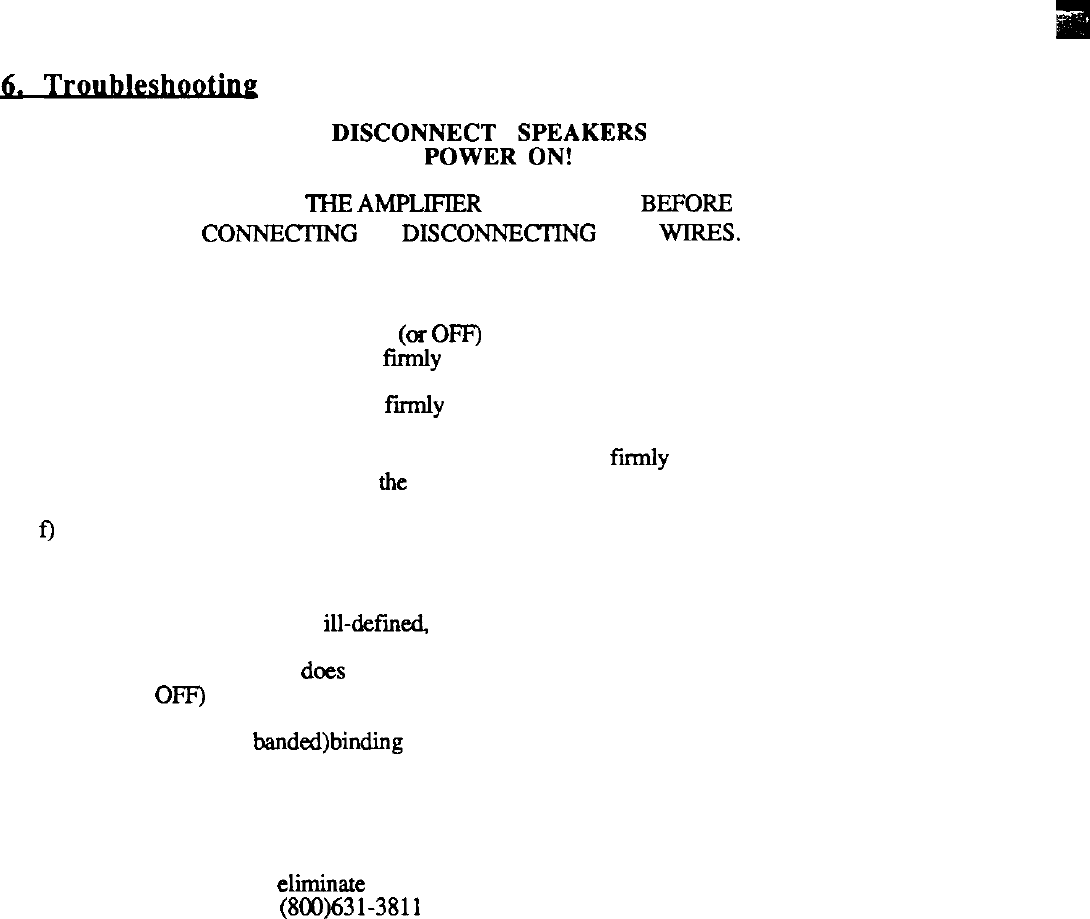
6
Troubleshooting
NEVER CONNECT OR DISCON;;FWERW$fKERS WITH THE AMPLIFIER
SWITCH
THIS
AMPLIPIBR TO STANDBY
BEFORE
CONNBCTING OR DISCONNBCTING ANY WIRES.
1. If one of your speakers does not operate, follow this procedure:
a) switch the amplifier to STANDBY
(or
OFF)
b) check that both speaker wires are
firmly
connected to binding posts in terminal cup of
speaker.
c) check that both speaker wires are.
fully
connected to binding posts on back panel of
amplifier.
d) check all interconnects/patch cords to ensure that they ate
firmly
connected.
e) check the identification labels on
the
back panel of the amplifier to ensure that the speaker
is connected to the appropriate binding post.
t) check that the Center Channel select switch is set correctly for your application, i.e.,
“I Only” for one center channel speaker, or “I and II” for two center channel speakers.
g) switch the amplifier to ON and play the speakers to ensure all units are operating.
2. If the total sound output seems ill-defined the phase of one or more speakers may be. reversed at
the wiring connections. Listen to each speaker individually and, if any unit is out-of-phase, it will
produce sonic information that does not seem to have an point of origin. Switch the amplifier to
STANDBY (or OFF) and check to ensure that the marked wire connects to the positive (red and
red banded) binding posts of amp and speaker, and that the unmarked wire connects to the
negative (black and black
banded)binding
posts of amp and speaker.
3. If you are using the Toshiba XB-2000 surmund-sound amplifier, select the “Test Tones” output
of the amplifier GUI setup procedure to ensure each speaker is connected to the correct binding
posts. Refer to the applicable operating instructions for any other amplifier.
4. If these procedures do not eliminate the problem that you are experiencing, call the Toshiba
Customer Support Center at
(800)631-3811
and speak with a customer service agent.









